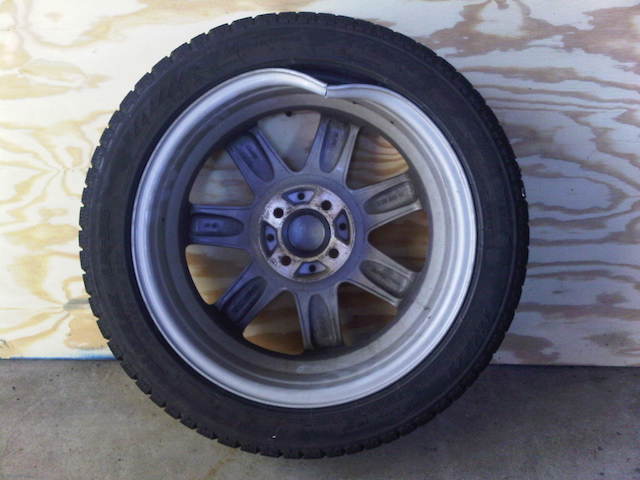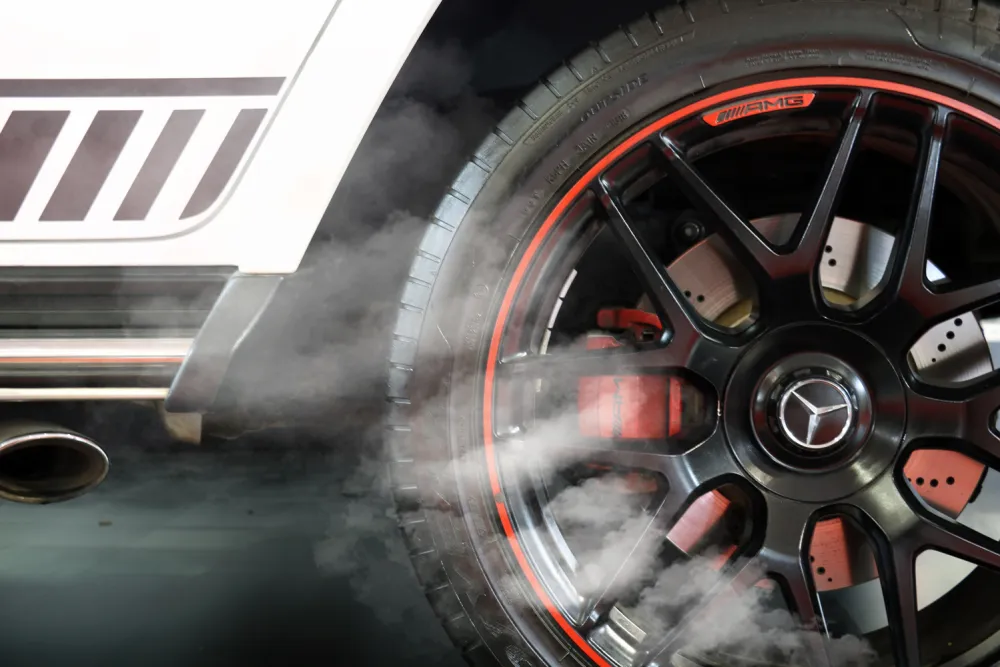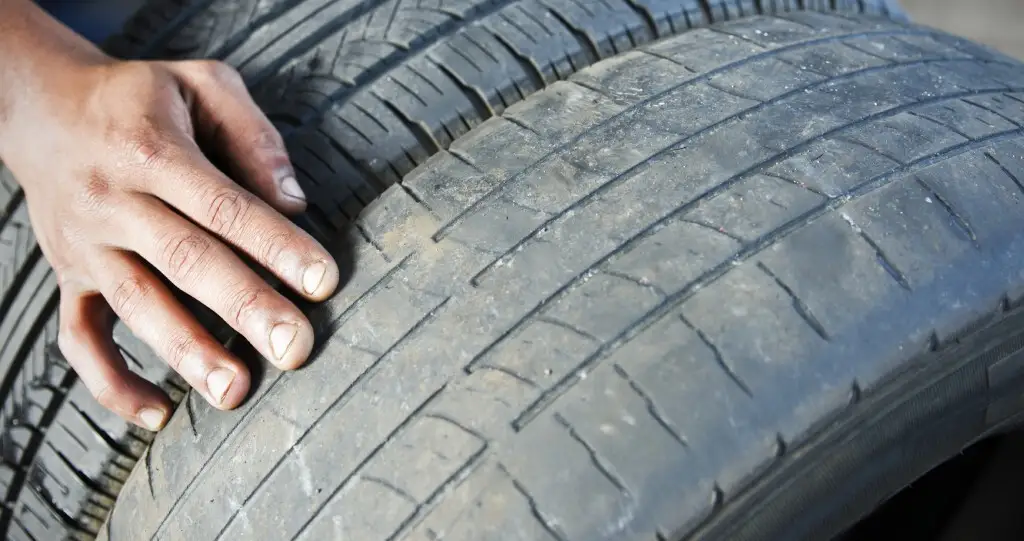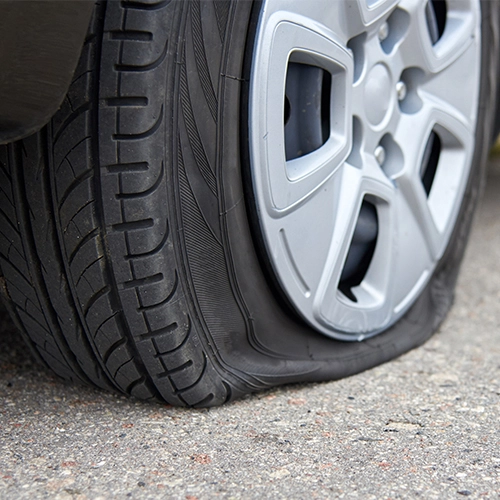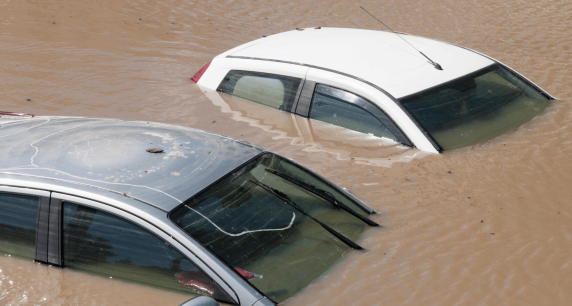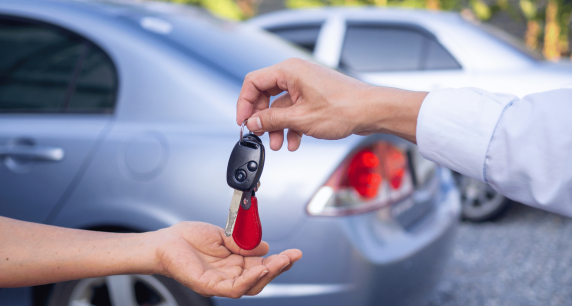Symptoms of a Bent Rim: 5 Things to Look Out for
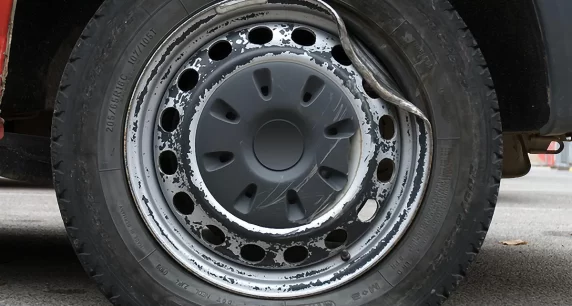
Wheels and rims are often overlooked when driving a vehicle down the road. However, two continuous raised strips of metal on each side of the wheel are all that keep each tire in place. There is also the possibility that even a small collision or everyday wear and tear could bend the rims, which could cause big problems. How can you tell whether your vehicle’s rim is bent, and can you still drive it?
All those questions and more will be answered in this guide. Let’s talk about bent rims and we’ll explain everything you need to know.
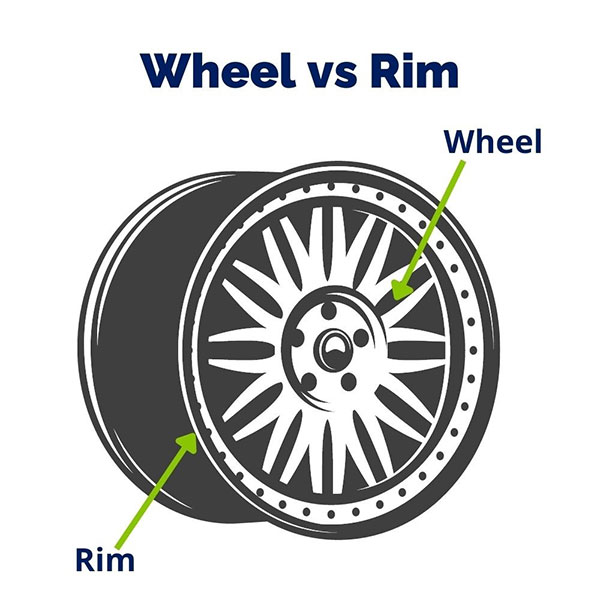
Even though rims and wheels are often used interchangeably, they refer to different things. Wheels have rims as part of them. As opposed to the rim, which consists of the outermost edges on each side of the wheel, the wheel consists of the whole metal assembly.
While driving, the rim holds the tire in place by pushing against it when it’s installed. Therefore, when the rim of the wheel bends, the symptoms will be different than if another part of the wheel bends.
You Can Tell If Your Rim Is Bent by These Signs
If you suspect that your rim is bent, you can confirm your suspicion with a few possible signs.
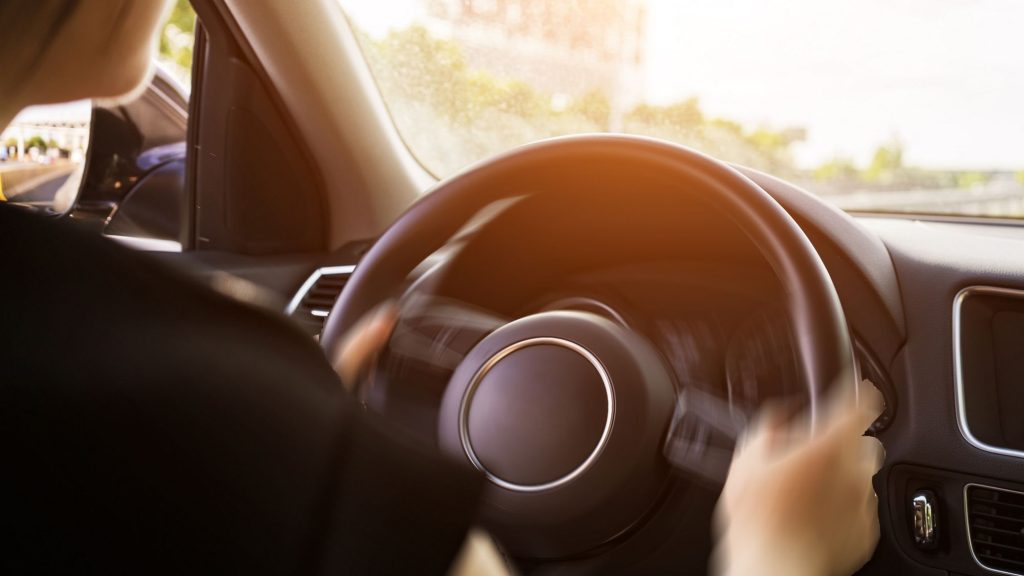
- Vibrations or shaking excessively
When the rim is bent, the wheel’s balance and weight are thrown off, which you’ll feel more as you speed. As speed increases the vibrations and shakes in the vehicle, affecting steering and handling.
- Visible Damage
You can tell a bent rim by its appearance alone! If you look closely at the rim, you may notice scuffs, scratches, cracks, or an overall curve that shouldn’t be there. The first symptom you might notice if you don’t closely monitor your vehicle’s performance is this.
It’s still wise to fix a bent rim if you see it. Even if you don’t see any other performance issues, it’s still a good idea to fix it. This is because if you hit the wrong pothole or bump, a bent rim can cause the entire tire to come off.
- Deficiency in braking performanceYour brakes can apply unevenly if your tire isn’t spinning properly. You may also lose control of your vehicle if you hit the brakes too fast or hard, which will extend your stopping distance.

- Unusual Treadwear
Over time, you may notice a difference in the treadwear if your vehicle has been driving with a bent rim. Vibrations from a bent rim will cause the wheel to shake while driving, changing the way the tread wears. Your tire may show excessive treadwear compared to the tire on your other rim, or the tire may have patches (inner or outer) that are wearing down more quickly.
- Loss of tire pressure over time
Ideally, your tire sits against the edge of the rim and a bead forms to hold the air inside it. When the rim is bent, it can cause the bead to crack, allowing the air to escape and possibly turn on the tire pressure light. However, no matter how big the gap is, the air will leak, so you need to take action right away.
The difference between a bent rim and an unbalanced tire
In spite of the similar symptoms presented by bent rims and unbalanced tires, they are two different problems requiring two different solutions. Tires that are unbalanced can be caused by different weights on the rims, whereas bent rims can be caused by damage to the rim.
You should balance the tires before mounting them on the wheels so that vibration and shaking don’t occur when driving at higher speeds. This is done by adding weights to the correct spots.
Why does a rim bend?
Wheel impacts are the most common cause of bent rims. Your rim might get damaged if you hit a curb, hit a pothole, or hit something else. Some people believe a large impact is required to bend a rim, but small impacts can also cause the rim to bend.
Additionally, if you drive an older car, the rim’s internal structure may become weak with age. Over time, if you drive over potholes and speed bumps enough, the rim will slowly begin to bend.
Can a bent rim be driven safely?
Not at all. Driving on a bent rim is usually not a problem, but the tire may lose air pressure rapidly or slide off the bead completely. Tire rims are there to help seal the tire, so any damage to the rim will reduce the rim’s effectiveness. Avoid driving with bent rims if you don’t want to lose a tire and lose control of your vehicle.
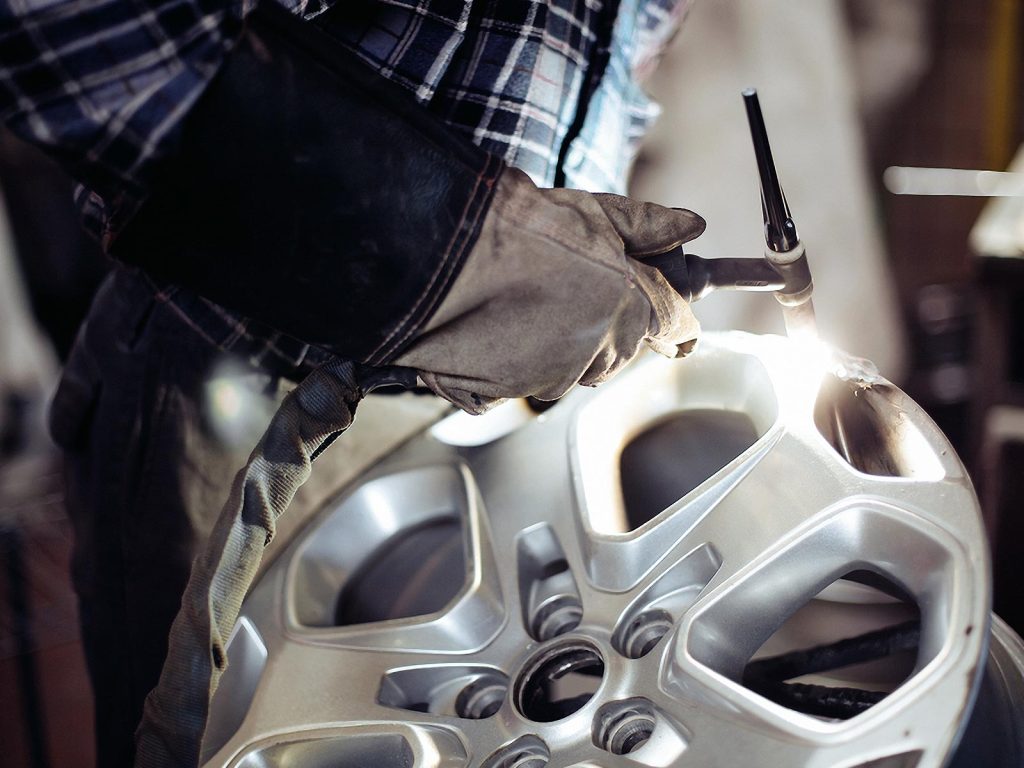
Is it possible to repair a bent rim?
It is usually possible to repair a bent rim rather than replacing the entire wheel at a certified repair shop. In the end, it all comes down to how severe the damage is. The tire should be able to be repaired if it is still on the rim and still holding air pressure, or if there is only a slight loss in air pressure. In some cases, however, the repair shop may recommend you replace the entire wheel if the tire can’t be mounted to the rim or other parts are damaged.

